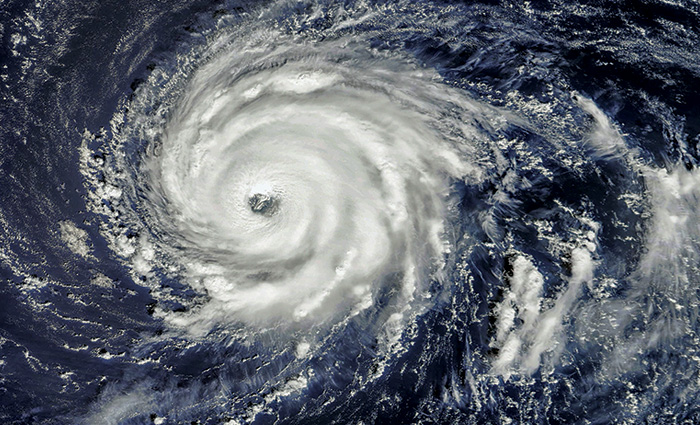Advertisement
With 20 named storms, the 2023 Atlantic Hurricane Season will go down as tied for the fourth-busiest on record. Seven of those storms became hurricanes, three classified as “major,” meaning Category 3, 4, or 5. An average year sees 14 named storms.

Photo: Modis/Terra (NASA Worldview)
With 20 named storms, the 2023 Atlantic Hurricane Season will go down as tied for the fourth-busiest on record. Seven of those storms became hurricanes, three classified as “major,” meaning Category 3, 4, or 5. An average year sees 14 named storms.
Last year was also the busiest Atlantic hurricane season in the presence of an El Niño weather pattern, which historically signals a less active season. While El Niño created higher levels of wind shear across the ocean, which dampens the formation of storms, the record warm upper ocean and sea surface temperatures, such as those reported last summer off the coast of Florida, led to the increased storm activity. Tropical storms feed off the energy in ocean water, so the warmer the water, the greater the amount of energy storms can draw.
Of the seven storms that were classified as hurricanes in 2023, Lee (pictured at left) was the only to reach Category 5, which hit Canada’s Maritimes in September. Idalia, the only hurricane to make landfall in the U.S. (Florida), maxed out at Category 4 in August. Tammy, a Category 2 that blew in October 20, took the honor of the latest calendar year hurricane on record in the tropical Atlantic.
Dr. Andra Gardner, a climate scientist at Rowan University in Glassboro, New Jersey, published new research in the journal Scientific Reports last October with her findings that Atlantic hurricanes are developing and strengthening faster than those 50 years ago. By analyzing data from the National Hurricane Center HURDAT2 database, she showed that storms from 2001 through 2020 (“modern era”) intensified between around 26% to 29% faster than those from 1971 through 1990 (“historical era”). And the chance of a storm strengthening from Category 1 (or weaker) to Category 3 or greater within 36 hours has “more than doubled in the modern era relative to the historical era.”
While those stats are worrisome, Gardner also found that storms are intensifying closer to land. This means stronger winds, more serious threats, and a bigger challenge for damage mitigation for affected areas.
“The increase in the number of times hurricanes turned from Category 1 or weaker to a major storm is particularly concerning since major hurricanes often produce the most damage in our coastal communities,” she says.
On the Left Coast, the National Hurricane Center issued its first-ever tropical storm watch (later changed to a warning) for parts of Southern California as the once-Category 4 Hurricane Hilary brought torrential rainfall and gusty winds to the Pacific Coast of Mexico and Baja California, before it broke records in four U.S. states for the wettest tropical cyclone or its remnants. This resulted in widespread flooding and numerous mudslides.
